Welcome to KSL Outdoors, I’m Adam Eakle, along with Scott Tolentino, Paul Thompson and Brett Prettyman with Trout Unlimited. Guys we are introducing people today to the cutthroat slam that Utah is putting on and it just so happens that Bear Lake here behind us has one of those species. They do, so there is four sub-species we are going to catch the Bear River today which are in Bear Lake. Ok, who’s leading the charge on this? This is his water. His water, he is going to show us where the fish are. All right let’s go get them.
The Utah Cutthroat Trout Slam is an opportunity to learn more about the native cutthroat trout in Utah. We have four sub-species in this state. We have Bear River Cutthroat trout. We have Bonneville cutthroat, Colorado cutthroat trout and Yellowstone cutthroat trout.
It’s an excuse to go fishing is really what it is, but it’s also an opportunity for people to contribute to conservation efforts to help protect and maintain the populations of native cutthroat trout in Utah.
We are going to put out a couple of downriggers. With a variety of different lure on them. We have line counter reels and when you are in shallow water it helps when you really drop the lines a long ways behind the boats. I’ll put these back to at least a 100 feet and then the flat lines that we are going to troll without down riggers probably put those back about 150 feet.
It would just break my heart if we catch the first fish before Scott and Paul. Oh it wouldn’t break my heart. Wouldn’t break my heart. Feeling pretty good? Yeah it feels like a great fish.
He feels good, it’s hard for me to tell with these giant rods.
And it’s got a tag. that’s a good one.
Nice.
In order to do the slam, you sign up on the Divisions website. Just go in like you are buying a fishing license and you sign up for the Utah Cutthroat Slam.
You pay twenty dollars, nineteen of that goes right back into conservation efforts. Which we are really excited about.
and then you start going out in the field and trying to catch these four sub-species of cutthroat in their historic range.
First fish in the slam here we go! Here we go. Very cool. Alright, look at that.
It’s important that you remember that it has to be in their historic range. Strawberry will not count if you catch a cutthroat there because those are.
Bear River Cutthroat and they are not in their historic range. They would have to be Colorado River there so, you have to pay attention to that. There is information on Utahcutthroatslam.org that shows all the historic range.
That’s a good one. Do you want me to reel this in? yeah.
you can see him out there on the surface.
nice fish, it’s a wild fish! alright! That’s a good fish.
Anybody that is fishing for the cutthroat slam would be happy to have a fish like that.
look at how Blue the top of that fish is.
So once you catch a fish, you then take a picture of it and then you submit it to the DWR with the date and the location.
and then you will be certified as having completed the slam. And you will be sent a medallion and also a certificate showing you did it.
This is a Bear River Cutthroat found in Bear Lake, one of the four sub-species that are part of the Utah Cutthroat slam. You can catch these fish obviously in Bear Lake like we are today but anywhere in the Bear River system, so the upper Bear, Mirror lake highway area, Rich County in Big Creek. We are restoring them to Otter Creek and in Cache Valley in the Logan River and Blacksmith Fork. All of those areas have the Bear River Cutthroat trout.
Yeah I think it’s just been a great learning opportunity, people are getting excited. We’ve got eight or nine people from other states that have already registered and are going to participate in the slam.
It just brings a level of excitement and then it’s a really nice token that you can get for your accomplishment when you are done.
That is a really cool medallion. Yeah the TU Chapter and Utah Council paid for those so that when people give their money to the Cutthroat Slam it goes right to conservation. That’s awesome and both of you are going to complete the slam. We are. I’m going to beat him yeah. That’s to be determined. Wait a minute here. You caught your Bear River today on the job while you were working and you caught your fish on my boat with my rod. That doesn’t count. Why not? What’s wrong with that? I don’t think it should count. He wasn’t electro-shocking. Oh that’s true. Hey we’ve got more here coming up from Bear Lake in a moment, some conservation work to make sure we’ve got this awesome fishery here at Bear Lake.
We are down here on Swan Creek this morning. It’s a weekly occurrence in the Spring here at Bear Lake and we are spawning cutthroat trout in our fish trap.
Unmarked.
The fish come up out of Bear Lake and these are ad fluvial fish, which means they live in the lake their whole life and they come up these streams to spawn. And as soon as they are done spawning they go back out to the lake. So they come up to the stream, they encounter our fish trap.
female, one, four, seven, three, one.
We separate the males and the females and then once a week, we have our hatchery staff show up.
and then we’ll take eggs if we need the eggs. From that year and if not we pass them above the stream and let them spawn naturally in the creek.
The spawning of Bear Lake Cutthroat trout by biologists has been happening here on Swan Creek since the 1940’s. Biologists use these fish, their eggs and milt to help sustain the fishery. About 15 years ago, the Utah DWR, Trout Unlimited, and several other groups started doing habitat work on tributaries to Bear Lake to help foster the natural reproduction of cutthroat trout.
We come in and did a lot of bank stabilization for homeowners who have built houses along the stream. But that has also benefited the fish, because when we did the habitat work, we did it with fish in mind. So we created pools and riffles and rearing habitat so before we had a lot of spawning habitat but not a lot of rearing habitat in the stream. Right now we have pretty good habitat for juvenile fish. For adult fish and for very small fish that are larvae and just hatching. The stream is able to support a lot more fish than it has in the past. Also there is some irrigation diversions upstream that were wide open and they were flood irrigation diversions and fish would end up out in fields, small fish would end up out in fields and now that they have screens on them. They are friendly to fish, they can’t go down these so we are keeping the fish in the stream which results in fish going back into the lake.
It’s been 15 years since some of these projects were completed and Scott says the last 5 years, he noticed a huge increase in natural reproduction of cutthroat trout.
twenty years ago we were clipping fish and we are still clipping fish to this day. and our regulation states if the fish has a fin clipped you can keep that fish and if it doesn’t have a fin clipped you’ve got to let it go. When I started 20 years ago and when we looked at the ratio of clipped fish to unclipped fish and it was about 90 to 10. So 90% that were coming from stocking and 10% that were coming from natural reproduction. Right now it’s about 75% from natural reproduction and about 25% from stocking so it’s almost made a complete flip flop on that and we’ve got to attribute that to the habitat work that has been on these tributaries for the last 15 years.
It’s really rewarding that so many of the fish are taking advantage of the reconnection that the partners have done that are showing up in the lake, showing up on the end of fishing lines and they are showing up in memories. That’s what it’s all about.
Well how cool is that biologists are seeing more wild fish, like this big hen that is headed back up Swan Creek, natural fish that is than they are seeing fish that are coming from the hatchery. That’s all because of the work the DWR and Trout Unlimited have done on the tributaries here at Bear Lake.
Oh he’s not too bad, he saw the boat he didn’t like that.
Welcome back to Bear Lake and our preview of the Utah Cutthroat Slam. You know I think the best part of the slam might be learning new places to fish or perhaps catching a native fish, one you might not even know about. Take the Yellowstone cutthroat for instance.
I’ve had so many people call me that had no idea that we have native Yellowstone cutthroat trout in Utah. And they think that is really cool that we have them in a few streams and we are managing them in a few streams in NW Utah for Yellowstones.>
And I think it’s important to note that the Cutthroat Slam isn’t just for anglers with boats, or just for fly fishers. This slam is for every angler who has little bit of adventure and a willingness to give back to the native species in Utah.
There are some special regulations you need to check the proclamation, you need to check before you plan a trip to these areas. But there are opportunities for all four of these fish with any gear type that you want.
I’ve had a few people call that just want to go and fish lakes. This is an opportunity to do that for your Bear River.
Yeah there you go.
That is a little better one. That is a little better one. Probably about a five pounder. Yeah alright. That’s a good fish.
So he has his adipose fin right here. So that’s a wild produced fish in Bear Lake. Can’t keep this fish, we need to release it. But yeah this is a hen Scott, Yeah it’s an adult. Yeah it hasn’t spawned yet. Yeah these fish in Bear Lake are Bear River Cutthroat. People call them Bear Lake cutthroat but they are genetically identical.
It’s an opportunity to learn about the fish, the wildlife that was here when the pioneers arrived. It’s important to not only understand that but to try and help protect it and maintain it so that it’s here for future generations to enjoy and appreciate and you know and get out and see what we have here in Utah.
Alright I think she is ready. Down to the depths.
Right on man. there we go. yeah! We needed to boat a fish. We paid our dues for that one yup.
Scott says the fishing will only get better once these cutthroat have completed their spawn. Today our technique was simple, we trolled about 2.5 miles per hour in front of the State Park, and on the East side of the Lake and I just used the same crankbaits I’ve used for wiper, walleye and striper. This #5 ghost shad rap and a blue and silver walleye diver.
One of the lure I like out here are these flat fish. It’s a lure that a lot of old timers use in the lake but a lot of new people use them to. Jointed rapalas work just as well, even these big articulated lures that look like cutthroat trout. We stocked a lot of fish the last few weeks and they are targeting these and so these work really well.
and then when all else fails you can always go to a dodger and a squid.
Oh my gosh. Heavy? Yes. It might be a lake trout. It feels really heavy.
oh my gosh, look at that. Pretty good lake trout. Oh I’ll take it. That’s part of the fun in fishing some of these places is you get other species. Oh my gosh. That’s got to be an 8-10 pound fish. Look at that fish

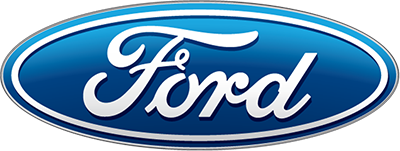
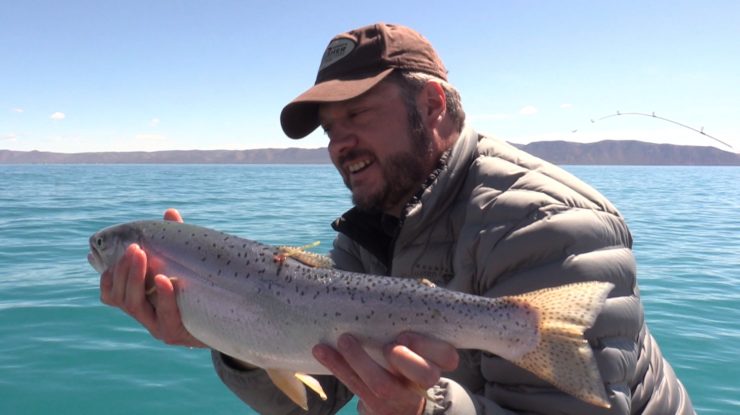
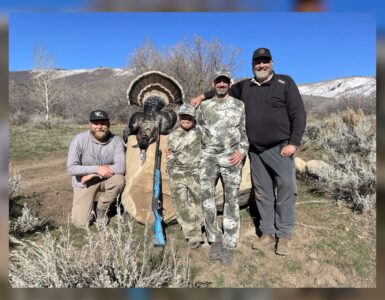
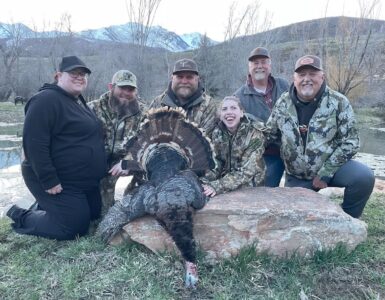
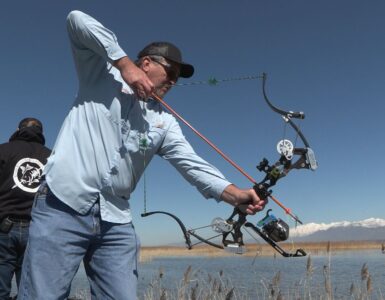










Add comment